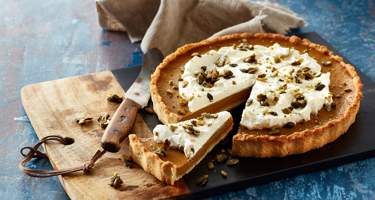
Halloween pumpkins are the ultimate sign that autumn has arrived, with their bright orange skins glowing on porches and in windows as carved jack-o’-lanterns. While they are famous for their spooky seasonal décor, these big, round squashes have plenty of uses that go way beyond Halloween night. In this guide, we will cover what makes a Halloween pumpkin special, when it is in season, where it comes from, plus tips on carving, storing, and even what to do with the leftover seeds and scraped out flesh.
What is a Halloween pumpkin?
A Halloween pumpkin is also called a carving pumpkin, field pumpkin, or jack-o’-lantern pumpkin. It is a variety of Cucurbita pepo bred for size, round shape, and sturdy walls. They are large with bright orange skin, shallow ribs, and a hollow interior that makes them ideal for carving creative designs. Compared to smaller pie or sugar pumpkins, the flesh is paler, more fibrous, and higher in water content, which means they are less suited to baking but still perfectly edible.

When is a Halloween pumpkin in season?
Halloween pumpkins are in season from mid-September to late October, right in time for spooky season. They are planted in late spring to early summer, usually between late May and early July in the Northern Hemisphere, and need plenty of warm days to grow. By early October, many farms open their “pick-your-own” pumpkin patches. While you might spot them in shops into November or even December in some places, they are at their freshest in the weeks before Halloween.
The origin of Halloween pumpkins
Pumpkins have been cultivated in North America for thousands of years, with archaeological evidence pointing to domestication in Mexico as early as 7,000–9,000 years ago.
The tradition of carving faces into vegetables, however, came from Ireland. During the Celtic festival of Samhain, people carved turnips, beets, and other root vegetables to ward off evil spirits.
When Irish immigrants arrived in the United States in the 19th century, they found pumpkins to be larger, easier to carve, and more visually striking. This eventually became the modern jack-o’-lantern tradition, and the pumpkin became a long-lasting icon of Halloween.
Can you eat Halloween pumpkins?
Yes, you can eat Halloween pumpkins, although their flavour and texture differ from smaller varieties that are typically used for cooking. The flesh is less sweet, more watery, and stringier. While many people use them purely for decoration, Halloween pumpkins can be turned into soups, stews, or curries when cooked with enough seasoning to enrich their mild flavour.

Cooking tips:
Roast wedges with olive oil, salt, and spices like smoked paprika or cinnamon.
Blend cooked pumpkin with onions, garlic, and coconut milk for a warming autumn soup.
Blend roasted pumpkin and use it in muffins or bread with added seasoning.
Take inspiration from recipes like roasted butternut squash, red kuri soup, and pumpkin purée. With a few adjustments, you can use a Halloween pumpkin as a substitute.
If you need more inspiration, check out our collections of red kuri squash recipes or butternut squash recipes. So, there are plenty of pumpkin dishes to spark your kitchen creativity.
We also have a large selection of deliciously spooky Halloween recipes you can try for the frightening month of October, such as Halloween cupcakes, witch finger cookies, or a
How to roast Halloween pumpkin seeds
Pumpkin seeds, even from Halloween pumpkins, are astonishingly delicious. That is, if you roast them with the right seasoning. Here is how you do it:
Scoop out the seeds and separate them from the pulp.
Rinse them thoroughly and pat dry.
For extra flavour, boil the seeds in salted water for 10 minutes before roasting.
Toss with olive oil and seasonings like paprika, garlic powder, chilli, or cinnamon for a sweet option.
Spread on a baking sheet and roast at 160–180 °C for 15–30 minutes, stirring occasionally, until crisp.
Once cooled, store in an airtight container and enjoy as a snack or crunchy salad topping. If you need inspiration from an already tried-and-tested recipe, go with these roasted pumpkin seeds. They use a particularly delicious set of spices that quickly turn the seeds into an irresistible snack.
How to carve a Halloween pumpkin
Carving a pumpkin is a seasonal ritual for many households, and with the right approach, it is both safe and incredibly rewarding for both children and adults.
Choose the right pumpkin: Look for one with a flat base, unblemished skin, and a sturdy stem.
Cut and clean: Use a sharp knife to cut a lid around the stem at an inward angle so it will not fall inside. Scoop out the seeds and stringy pulp with a large spoon.
Transfer your design: You can draw freehand or tape a printed stencil onto the pumpkin.
Carve carefully: Use a small knife or pumpkin carving tools and cut slowly and steadily.
Preserve your work: Rub petroleum jelly or vegetable oil on the cut edges to slow dehydration, and place the pumpkin outdoors in cool weather to help it last longer.
Ideas for Halloween pumpkins
Looking for inspiration beyond the classic jack-o’-lantern face? Halloween pumpkins can be decorated in countless ways, like painted in bold patterns, covered in glitter, or drilled with holes to create glowing lantern effects. Below, we take you through easy and scary Halloween pumpkin carving ideas that make yours stand out.
Easy Halloween pumpkin carving ideas
If you are short on time or prefer something fairly easy, start with simple designs. Large triangle eyes, a wide grin, or basic star and heart cut-outs are quick to carve and easy to see from a distance. You can also stamp out neat shapes using cookie cutters and a mallet. For a mess-free option, skip cutting altogether and decorate with stickers, paint, or washi tape.
Scary Halloween pumpkin carving ideas
For a more dramatic display, try designs that bring a little fright to your doorstep. Carve sinister faces with jagged teeth, deep-set eyes, or eerie grins lit from within by flickering candles or LED lights. You can also scrape away the skin in some areas instead of cutting all the way through, creating shadows and texture. Haunted houses, creepy silhouettes, or glowing skulls all make great scary carving ideas.
What to do with a pumpkin after Halloween
If your Halloween pumpkin is still fresh and uncarved, you can cook and eat it as you would any other winter squash. However, carved pumpkins left outside are best composted.
Here are a few ideas:
Compost the flesh to enrich your garden soil.
Feed raw pumpkin to local wildlife; deer, squirrels, and some birds enjoy it. Just make sure you remove any paint or candle wax beforehand.
Save the seeds for roasting or planting next season.
How to store a Halloween pumpkin
Uncarved pumpkins last much longer than carved ones, so how you store them depends on which you have.
Uncarved pumpkins: Store in a cool, dry, and well-ventilated place, ideally between 10–15 °C. Avoid stacking or placing them in direct sunlight. When stored properly, they last one to three months.
Carved pumpkins: These usually only last 3–7 days. To keep them looking fresh until Halloween night, carve as close to the date as possible, coat the cut edges with petroleum jelly, and refrigerate overnight if it is warm.
Discover more pumpkin and squash varieties
If you have enjoyed learning about Halloween pumpkins, there are many more pumpkin varieties to discover. For a broader look at their uses and seasonal tips, see the guide about pumpkins, or explore individual favourites like red kuri squash, butternut squash, and spaghetti squash. It is a great way to learn more about these seasonal vegetables while adding fresh ideas to your autumn and winter recipe collection.


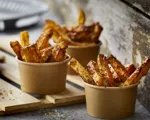



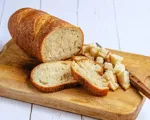
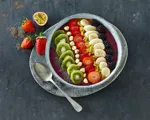
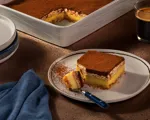




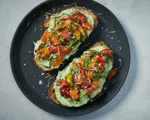
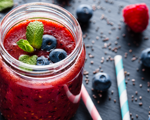
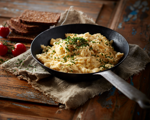
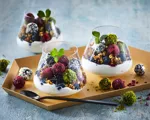
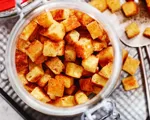
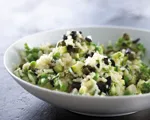
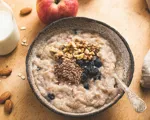
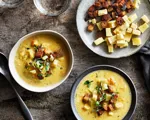
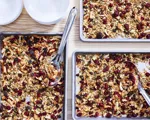
&format=webp)
&format=webp)

















